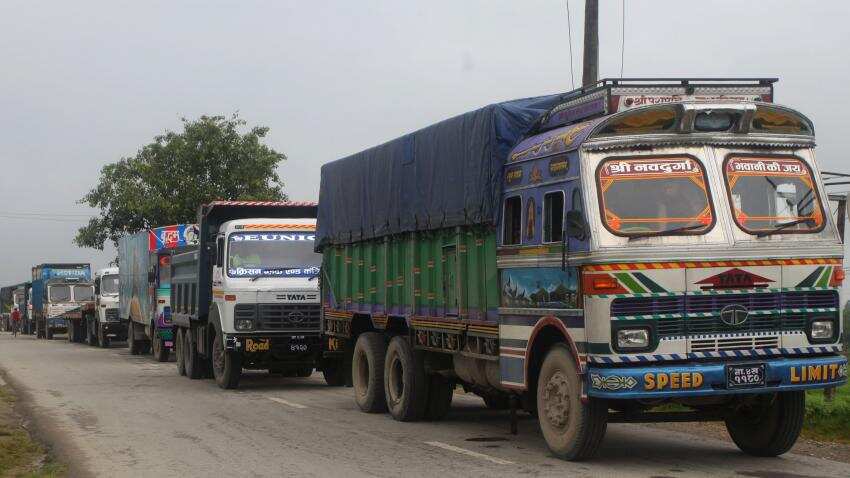MHCV sales to post steep decline in sales in FY18: Report
Despite the Budget's focus on the rural sector MHCV sales is expected to see a substantial decline in CV sales in FY18.

The Medium and Heavy Commercial Vehicle (MHCV) segment is expected to see a steep decline in volumes in FY18. This is due to the slowing replacement demand, weak industrial activity, rising diesel prices and overcapacity, according to an India Ratings and Research (Ind-Ra) report.
Despite the FY18 budget focus on the rural sector India Ratings does not expect a substantial increase in rural demand for commercial vehicles (CVs). Despite the government’s commitment to double rural incomes in the next five years and the high allocation for rural agriculture and allied sectors in FY18 of Rs 1.81 lakh crore, Ind-Ra does not expect a material increase in rural demand for CVs.
Transporters would primarily base their purchase decisions on the demand-supply position in the road transportation space in their respective regions and the extent to which it will be possible to deploy the trucks, it said.
It further added that weak sales volume trends as well as macro-economic trends observed in FY2017 for the MHCV segment could lead to the fall in volumes in FY18. The agency however does not expect a significant reduction in domestic MHCV volumes in FY17 due to certain exceptional demand drivers.
It says that the replacement demand, which has been a key driver of MHCV sales in FY16 and FY15, has largely declined. Given the continued uncertainty on the industrial front, the agency expects freight rates to remain flat.
Besides this, any further rise in diesel prices, may squeeze margins of transporters and fleet operators. The above 25 ton capacity segment of MHCVs was the driver of volumes in FY16 but has declined very sharply in FY17, which suggests overcapacity in the road transportation industry.
The report further believes that the demonetisation drive has impacted the second hand CV market as significant proportion of transactions take place in cash. This means that the efforts of fleet operators to sell their old vehicles to raise funds for part-funding of their new CV purchases has taken a large hit.
In addition, the level of industrial activity as reflected in the Index of Industrial Production (IIP) remains inconsistent, declining from March 2016, said the report.
Ind-Ra believes that the implementation of Goods and Service Tax (GST) in FY18 would reduce transportation time significantly as goods will be transported freely from one state to another bypassing various check points and octroi posts. There would create additional spare capacity in the road transportation sector, creating a drag on new MHCV sales.
The current sales that MHCV sales, especially in the higher tonnage segments were supported to an extent by the December 31, 2015 notification by the National Highways Authority of India (NHAI) to toll plazas to levy a toll of 10 times the usual toll on overloaded trucks and to release the vehicle only after ensuring that the excess load is removed. This India Ratings says that it does not believe that this factor would support vehicle sales for an extended period, considering that large fleet operators have already been investing in heavier vehicles to optimise operating cost.
The only thing which will help the growth of in volumes of MHCV in the current financial year is the pre-emptive purchases in Q4FY17 due to implementation of Bharat Stage IV emission norms from April 1, 2017. This is as CV costs would go up by Rs 1 lakh after incorporating the changes after April 1.
Get Latest Business News, Stock Market Updates and Videos; Check your tax outgo through Income Tax Calculator and save money through our Personal Finance coverage. Check Business Breaking News Live on Zee Business Twitter and Facebook. Subscribe on YouTube.
RECOMMENDED STORIES

Rs 3,500 Monthly SIP for 35 years vs Rs 35,000 Monthly SIP for 16 Years: Which can give you higher corpus in long term? See calculations

Small SIP, Big Impact: Rs 1,111 monthly SIP for 40 years, Rs 11,111 for 20 years or Rs 22,222 for 10 years, which do you think works best?
02:57 PM IST









 Give info on payments to brokers: CVC to government work bidders
Give info on payments to brokers: CVC to government work bidders Tata Motors signs up Akshay Kumar as brand ambassador for CVs
Tata Motors signs up Akshay Kumar as brand ambassador for CVs Stranded trucks, unpaid workers: India Inc counts cost of cash crunch
Stranded trucks, unpaid workers: India Inc counts cost of cash crunch Can Akshay Kumar and Ajay Devgn sell trucks for Tata Motors and Mahindra?
Can Akshay Kumar and Ajay Devgn sell trucks for Tata Motors and Mahindra? Small cars, two-wheelers, CV sales to stabilise quickly after demonetisation
Small cars, two-wheelers, CV sales to stabilise quickly after demonetisation